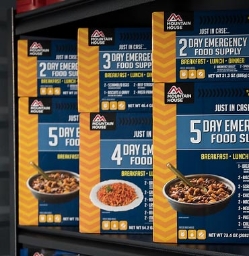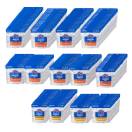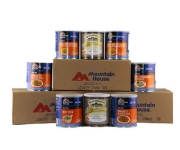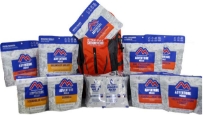Crappy Tips for Survival Sanitation
Posted by Harry Weyandt on Mar 23rd 2020
Crappy Tips for Survival Sanitation
Harry Weyandt
By Harry R Weyandt, Nitro-Pak.Com Preparedness Expert
Here is a crappy subject that most of us avoid thinking about or discussing…emergency sanitation needs when disaster strikes. So let’s get this out-in-the-air so to speak and look at why this subject is so important and simple steps you can take now to be better prepared.
After any major disaster or flooding, sewer systems we take for granted everyday may fail or become inoperable for an extended period of time. Dysentery and disease can quickly occur if sewage and human waste is not properly taken care of.
So what steps can you take now to lessen the impact on you and your family?
There are several low cost solutions you can do right now to be better prepared. If your sewer system at home has failed, you can still use your toilet bowl and seat to take care of business by using a plastic bag liner in it. If there is any excess water is in the toilet, remove it and the tape handle so no new water enters.
One solution I really like is the Reliance® Double Doodie PLUS Waste Bags. These bags are ideal for emergency use for several reasons. First, the PLUS size is oversized and designed to fit into any standard toilet bowl. They are made of heavy-mil plastic bags that are double lined to avoid puncture and breakage after use and removal. They also feature a double zip-lock seal for added safety after use and also have a built-in carrying handle for easy carrying. Each bag contains what I call poo powder or they call Bio-Gel to control toilet waste and odor. Bio-Gel solidifies human waste into a gelatin, masking odors and making it much easier to transport. These bags are a great investment for emergency preparedness and are well worth their weight in gold when you need them!
These bags are ideal for emergency use for several reasons. First, the PLUS size is oversized and designed to fit into any standard toilet bowl. They are made of heavy-mil plastic bags that are double lined to avoid puncture and breakage after use and removal. They also feature a double zip-lock seal for added safety after use and also have a built-in carrying handle for easy carrying. Each bag contains what I call poo powder or they call Bio-Gel to control toilet waste and odor. Bio-Gel solidifies human waste into a gelatin, masking odors and making it much easier to transport. These bags are a great investment for emergency preparedness and are well worth their weight in gold when you need them!
As a low cost alternative, you can use two (2) standard black plastic trash bags to line your toilet bowl under the seat. Typically the smallest size you can buy is 33 gallons, but you will only be using a small fraction of that capacity. Using two bags together adds additional safety should one bag fail (not a pretty sight if one does). When approximately half full of waste in the toilet (about 1-2 gallons), remove the bags together, tie closed and take it to a trash container outside or other safe place out of the house. If needed, you can dig a deep enough hole deep in your back yard to dispose of them in. Public officials may also have collection areas to take your waste to.
To control smelly odors, we suggest camping toilet powder like Reliance Bio-Blue. Place 1 or 2 packets in the toilet bag liner. Other liquid RV type toilet chemicals can also be used to control odors.
If a home toilet is unavailable, I would recommend a portable all-in-one camping type toilet with cover like the Reliance Hassock Portable Toilet, Tri-To-Go Toilet, Fold-N-Go Toilet or Flush-N-Go Toilet. Each one is sturdy, well made and can be used for both camping and emergency preparedness.
Toilet. Each one is sturdy, well made and can be used for both camping and emergency preparedness.
Another thing that should go without mentioning is to have on hand a VERY good supply of toilet paper and hand sanitizer. You don’t want to run out of TP for any reason, so I suggest stocking up and having a 6 month to a year supply on hand. The average person uses 24 rolls of TP per year, so plan accordingly. As far as I am concerned, for me and my family, you just can’t store too much toilet paper. Enough said!
© 2017 Nitro-Pak Preparedness Center Inc. www.nitro-pak.com
Harry R Weyandt is the founder and owner of Nitro-Pak Preparedness Center Inc., one of America’s oldest and most respected preparedness companies. He has been a leading authority in the preparedness industry for over 30 years and has been interviewed by CNN, ABC News, FOX News, The New York Times, USA Today and The Wall Street Journal among others as an expert in his field. He lives in Utah with this wife Vickie along with their children and grandchildren. His hobbies are boating, camping, international travel and anything to do with preparedness





